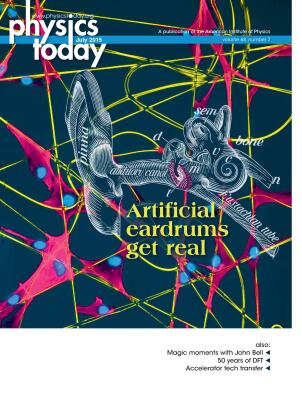Longitudinal waves in piano strings
DOI: 10.1063/PT.3.2838
When you strike a piano key, a felt hammer excites a complex set of waves that travel along a musical wire to the piano’s bridge and soundboard. Surprisingly, not all of those waves are the expected transverse variety; two kinds of longitudinal waves also propagate and have been studied, though with little empirical input, for at least 20 years. Free-response longitudinal waves arise from the local increase in tension caused by the wire’s elongation, and they have frequencies determined by the length of the wire and its speed of sound. More interesting are the forced-response longitudinal waves, induced by nonlinear mixing of transverse waves; they occur with significant audible power at frequencies that don’t correspond to transverse overtones. Recognizing that theory needs experiment, Thomas Moore of Rollins College in Florida and two of his undergraduate students, Nikki Etchenique (now graduated) and Samantha Collin, simplified the complexities of a real piano. They attached two steady-state mechanical shakers to a piano’s lowest B-flat string—one at each end, oscillating at the 16th and 19th overtones of the string’s fundamental frequency of 27.4 Hz. With only two transverse modes, the audio signals generated a simple power spectrum. As predicted by the theory and as shown here, the sum and difference frequencies of the two overtones have significant audible power. Also in accordance with theory, the amplitude of the induced longitudinal motion is linearly related to each of the driving amplitudes, within the range of normal piano playing. If your four-year-old starts banging away, however, all bets are off. (N. Etchenique, S. R. Collin, T. R. Moore, J. Acoust. Soc. Am. 137, 1766, 2015, doi:10.1121/1.4916708

